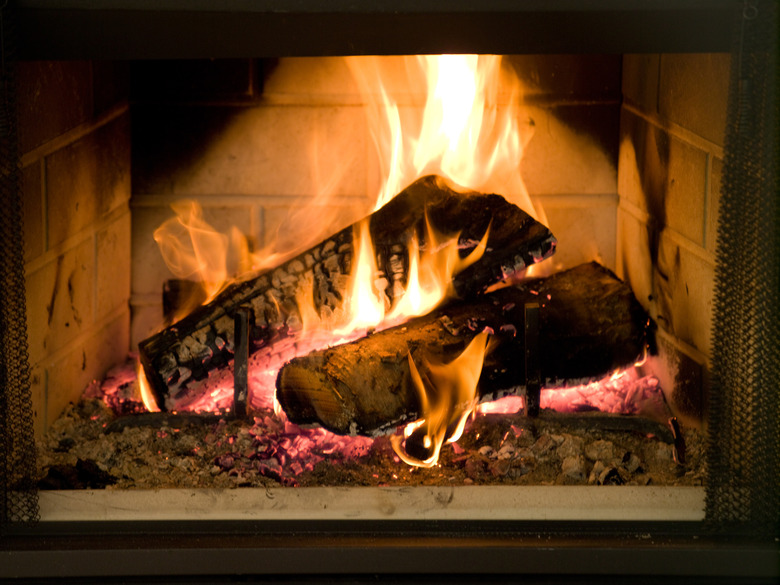Fireplace Damper Removal
We may receive a commission on purchases made from links.
The damper is the "door" that separates the fireplace firebox and the chimney flue, the passageway to outside. When you have a fire in your fireplace, the damper is open to allow smoke to escape through your chimney. When there is no fire, keeping the damper closed prevents heated room air from being lost up the chimney (which would raise your heating bill). Removing a damper, either the door or the entire assembly, may be required if the damper is damaged or if you want to install a flue insert to make an old chimney usable again. The process of removal is generally straightforward and can be done with the right tools, safety equipment and, if necessary, the help of a professional.
Parts of a Fireplace Damper
Parts of a Fireplace Damper
If you're planning to remove your fireplace damper, it may be helpful to know its components. The two essential parts are the flapper and the frame. The frame is the cast iron or steel opening that lets the smoke move up through the chimney. It's usually 3 to 8 inches wide and 24 to 36 inches long. The flapper, or damper plate, is operated by a chain or pull system and controls airflow through the chimney. In other words, when the flapper is closed, air won't pass through the chimney and into your home and when it's open, smoke can pass through.
How to Remove the Damper Frame
How to Remove the Damper Frame
The damper frame may need to be removed to make room for a chimney insert or wood stove. The frame is much thicker than the flapper and harder to remove.
Because removing the frame often requires complex and potentially unsafe maneuvering, such as cutting metal, loosening mortar around the bricks and using a hammer to shatter the frame, it's not advised that you do this on your own. Instead, you should call a professional. You can, however, remove the flapper or damper plate without professional help.
Things Needed
How to Remove the Flapper
1. Clean Debris Around the Area
Before removing a fireplace damper, clear the area of any debris that might be preventing it from opening or closing. Protect yourself with safety equipment, such as gloves and eye protection. Clean any debris from the firebox and the area where the damper sits. Remove and toss out ashes in the firebox — make sure ashes have cooled beforehand.
2. Detach the Flapper
Find the hinges or pivot points that allow the flapper to open and close. See if the flapper can be moved out of the hinges or pivot points. Some flappers can be shifted sideways and simply lifted from the frame. If it can't be remove this way, you may need to cut out the hinges or hinge pins, using a grinder and metal cutoff wheel (or call a professional if you're not comfortable doing this).
Alternatively, you might see a rod attached to the frame by a nut. Loosening the nut with an open-end wrench can help you remove the rod and take down the flapper.
